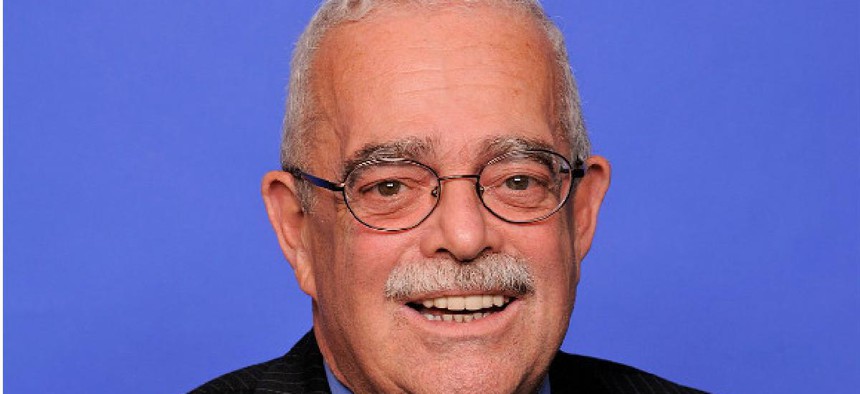Gerry Connolly: FITARA's force multiplier

For two decades, Eagle award winner Rep. Gerry Connolly has focused on IT, agency employees and the companies that partner with government.

Photo by David Wiegold
Rep. Gerry Connolly (D-Va.) tells a story about his first week as an elected official, when he was a member of the Fairfax County Board of Supervisors and asked about the return on investment on the technology budget.
"Folks looked at me like deer in the headlight," Connolly said. At the time, technology was managed like a commodity. "Somebody went around with a clipboard and asked, 'How many computers do you need?'"
In his 14 years in local government, Connolly worked hard to change that approach. "We made investments compete against each other, [and] we absolutely asked people to talk about and analyze the force-multiplier effect -- the improvement in the quality of service or the productivity gains that could be made," he said.
That experience laid the foundation for Connolly's work in Congress, which began in 2009 and last year included co-sponsoring the most sweeping IT reform legislation in two decades. With his track record of advocating for public servants and industry partners in the federal IT community, Connolly provided expertise and ideological cover to efforts by Rep. Darrell Issa (R-Calif.) to pass the Federal IT Acquisition Reform Act.
The legislation, an update to the Clinger-Cohen Act, bounced around Congress for two years and earned near-unanimous support in the House while going ignored in the Democrat-controlled Senate, where there was reluctance to act on a bill tagged with the Issa brand.
The White House did not have much to say about FITARA when it came up in hearings featuring then-federal CIO Steven VanRoekel, even though the bill embraced and codified a variety of administration initiatives.
"The Office of Management and Budget never came out and embraced it. They never really helped us," Connolly said. "We got it done without them being much of a participant one way or the other."
His advocacy helped Issa push the bill on a bipartisan basis. At the staff level, relationships among tech policy experts on the Oversight and Government Reform Committee helped build support and were instrumental in obtaining and incorporating feedback from industry, which was cool to a few aspects of the legislation.
Perhaps the biggest boost for FITARA was unexpected: the epic fail that was the launch of HealthCare.gov. That event focused attention on federal IT like never before, but it still couldn't push FITARA over the finish line in 2013. Finally, in 2014, a version of the bill that included enhanced CIO authorities, a renewed push for data center consolidation and strategic sourcing initiatives passed both chambers as part of the National Defense Authorization Act and was signed into law.
Yet for Connolly -- whose focus on IT, agency employees and the companies that partner with government now spans two decades -- it's still just a small step toward reducing waste and duplication in government IT spending and generating better outcomes.
"I am chagrined at how far behind some of our federal agencies really are when it comes to the effective deployment of technology," he said. "The good news is we start from a point of such inefficiency that our productivity and efficiency gains initially, assuming full implementation, are going to be quite large, and the savings that come from that will also be quite large."
NEXT STORY: What, exactly, does a digital service team do?






